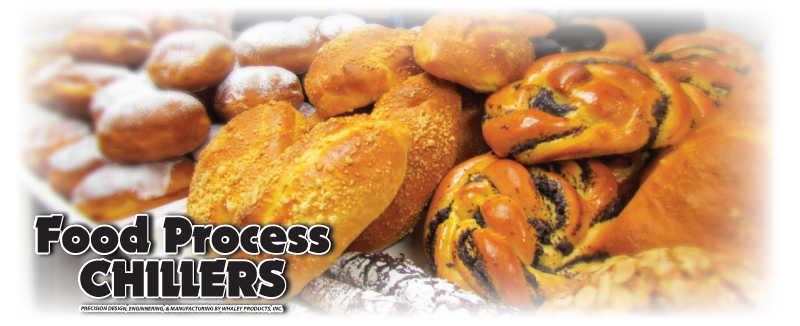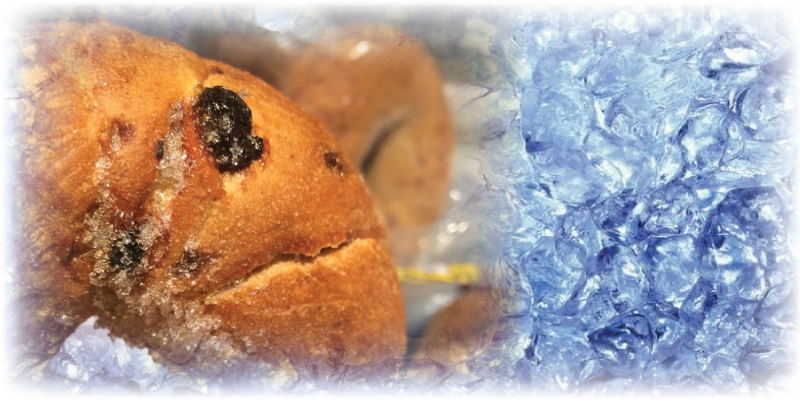Baked Good Cooling
Who doesn’t enjoy a box of cookies, or a slice of your favorite pie? Whaley Products can help in the reduction in heat when these products are created. Temperature and time are crucial to the chemistry, texture, and overall quality of baked goods. Baked goods can come in a variety of recipes designated for ideal texture, sweetness/saltiness, and ingredients use.
Bakers cool ingredients a few different times during the process. First bakers can cool ingredients and water prior to mixing. This first cooling allows for dough to be cooled. The ideal mixing dough temperature is 68°F. This exact temperature can obtained by circulating refrigerant through a jacketed chiller, cooling tower or chiller. Water cooling disposes of warm temperature of the dough (it is a great insulator). Cooling dough also allows for the fermentation rate to be constant. If the fermentation happens quickly, the volume of the product and the crust of the product will vary.
The chilling of dough before baking dries the dough out slowly, allowing for the more concentration of sugar. The more sugar the recipe calls for the chewer and crisper the product will be. Dough of any type, bread, cookies or pies can be cooled and chilled to add flavor to the item. Unbaked pastries must have their internal temperatures quickly and uniformly reduced to 19°F. The reduction of this quick acting process is called shock-freezing. If freezing of dough is slow, ice crystals will form, expand and damage yeast.
Freezing dough or finished products are important for shipping, and packing in the baked good industry. Dough of any type, bread, cookies or pies can be cooled and chilled to add flavor to the item. Unbaked pastries must have their internal temperatures quickly and uniformly reduced to 19°F. The reduction of this quick acting process is called shock-freezing. If freezing of dough is slow, ice crystals will form, expand and damage yeast.
Keeping dough frozen after its baked, or not to be shipped, packaged and used elsewhere requires a very specific temperature. Long lasting freezing can damage yeast. The target temperature for dough is -4⁰F. If dough is allowed to thaw out during transportation, product can be ruined and have its physical attributes change. Thawing temperatures for dough are 35⁰ to 40⁰F. Avoiding large temperature gradients and controlling the cooling and thawing of dough is crucial to baking. If the temperature reaches above 40⁰F bacteria can start to grow in the dough.


